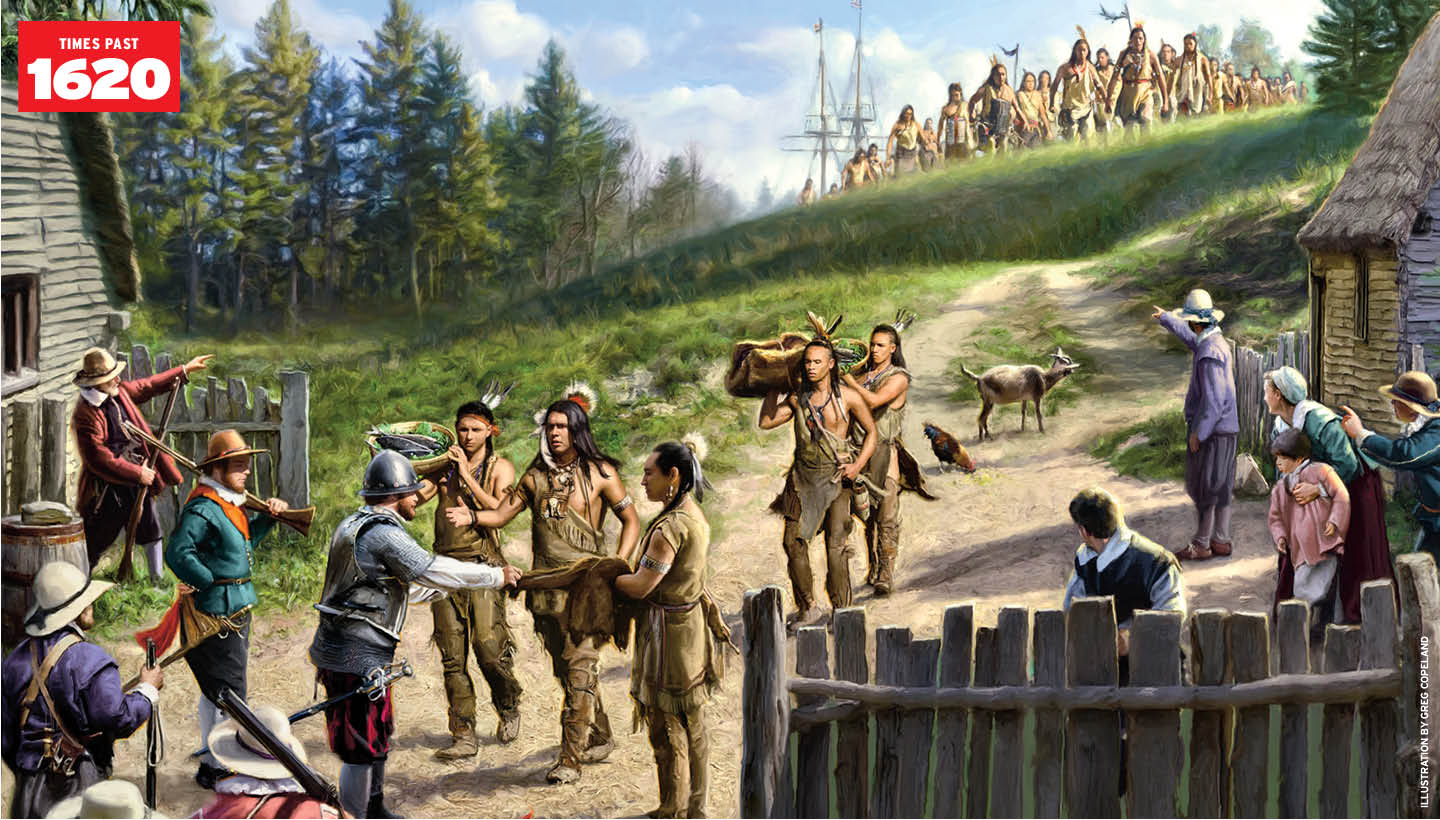For months during the long winter of 1620-21, the Wampanoag people watched uneasily as the strangers settled on their land. First, these white people dug into some graves, probably looking for objects of value. Then they unearthed a big stockpile of corn that was being saved for planting in the spring. Finally, they began building a settlement on the former site of an Indigenous village on the coast of what is now Massachusetts. The village was empty because its inhabitants had recently been wiped out by a disease brought by people on a previous European ship.
The Wampanoag name for that place was Patuxet. The newcomers, who were from England, called it Plymouth. They’re known to history as the Pilgrims. Their journey on a ship called the Mayflower, their settlement in today’s New England, and their so-called “first Thanksgiving” are part of one of the most famous legends in American history.
It was the long winter of 1620-21. For months, the Wampanoag people watched as the strangers settled on their land. It made them uneasy. First, these white people turned over some graves, probably looking for valuable objects. Then they dug up a big stash of corn that was being saved for planting in the spring. Finally, they began building a settlement on the coast of what is now Massachusetts. Their new home was on the former site of an Indigenous village. The village had been empty for some time. Its residents had recently been wiped out by a disease brought by people on a previous European ship.
The Wampanoag name for that place was Patuxet. The newcomers called it Plymouth. These settlers were from England. They’re known to history as the Pilgrims. Their journey on a ship called the Mayflower, their settlement in today’s New England, and their so-called “first Thanksgiving” are part of one of the most famous legends in American history.

